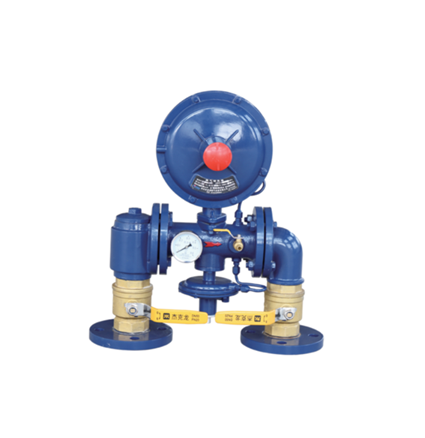
Nov . 06, 2024 17:49
Back to list
Gas Pressure Regulator Valve Explained in Simple Terms for Better Understanding
Understanding Gas Pressure Regulators A Comprehensive Overview
Gas pressure regulators are essential devices in various industries, facilitating the safe and efficient utilization of gases. These regulators play a critical role in maintaining consistent pressure levels, ensuring that gases are delivered at the required pressure for different applications, from household appliances to industrial processes. In this article, we will explore the functioning, applications, types, and significance of gas pressure regulators.
What is a Gas Pressure Regulator?
A gas pressure regulator is a mechanical device designed to reduce and stabilize the pressure of gas coming from a higher-pressure source. This reduction ensures that the gas is delivered at a safe and usable pressure for various applications. Regulators are commonly used with various gases, including natural gas, propane, and oxygen, among others.
How Does a Gas Pressure Regulator Work?
The functioning of a gas pressure regulator is based on a relatively simple mechanism. It typically consists of an inlet, a diaphragm, a spring, and an outlet.
1. Inlet The high-pressure gas enters the regulator through the inlet. 2. Diaphragm The pressure on the diaphragm is balanced by a spring. As gas enters, it exerts pressure on the diaphragm, which begins to move.
3. Spring Adjustment The spring is calibrated to a specific pressure. When the diaphragm moves in response to the incoming pressure, it opens or closes a valve that regulates the flow of gas.
4. Outlet The controlled gas flows out of the regulator through the outlet at a consistent and lower pressure.
This process ensures that fluctuations in the inlet pressure do not affect the outlet pressure, providing a steady gas supply that is crucial for safety and efficiency.
Types of Gas Pressure Regulators
.
1. Single-Stage Regulators These regulators reduce high pressure to a lower pressure in a single step. They are ideal for applications where there is a minimal variation in supply pressure and are commonly used in residential settings for appliances like gas stoves and heaters.
صمام منظم ضغط الغاز

2. Two-Stage Regulators These regulators perform the pressure reduction in two steps, offering improved stability and precision. They are particularly useful in industrial applications where the gas supply may vary significantly, ensuring that the outlet pressure remains constant regardless of changes in the input pressure.
Applications of Gas Pressure Regulators
Gas pressure regulators find applications in various sectors
- Residential Use In homes, regulators are used with appliances powered by natural gas or propane, providing safe and reliable fuel for cooking, heating, and hot water.
- Industrial Processes In industrial settings, regulators ensure that gases such as oxygen, acetylene, and nitrogen are supplied at the correct pressures for welding, cutting, and chemical reactions.
- Medical Applications In healthcare, regulators are critical for controlling the flow of medical gases, such as oxygen, used in patient care.
- Automotive Industry Gas pressure regulators are employed in vehicles that run on compressed natural gas (CNG) or propane, ensuring optimal engine performance.
Importance of Gas Pressure Regulators
The importance of gas pressure regulators cannot be overstated. They are critical for safety, as they prevent over-pressurization, which can lead to dangerous leaks or explosions. Additionally, consistent pressure delivery enhances the efficiency of gas usage, reducing waste and lowering costs.
Furthermore, with the increasing focus on energy efficiency and safety standards, the role of gas pressure regulators will continue to grow in significance across various sectors.
Conclusion
In summary, gas pressure regulators are indispensable components in the management of gas systems. Their ability to regulate pressure effectively contributes not only to operational efficiency but also to safety in various applications. As technology advances, we can expect to see more sophisticated regulators capable of meeting the evolving demands of the industry, ensuring that gas is managed safely and efficiently for generations to come.
Latest news
-
Safety Valve Spring-Loaded Design Overpressure ProtectionNewsJul.25,2025
-
Precision Voltage Regulator AC5 Accuracy Grade PerformanceNewsJul.25,2025
-
Natural Gas Pressure Regulating Skid Industrial Pipeline ApplicationsNewsJul.25,2025
-
Natural Gas Filter Stainless Steel Mesh Element DesignNewsJul.25,2025
-
Gas Pressure Regulator Valve Direct-Acting Spring-Loaded DesignNewsJul.25,2025
-
Decompression Equipment Multi-Stage Heat Exchange System DesignNewsJul.25,2025

